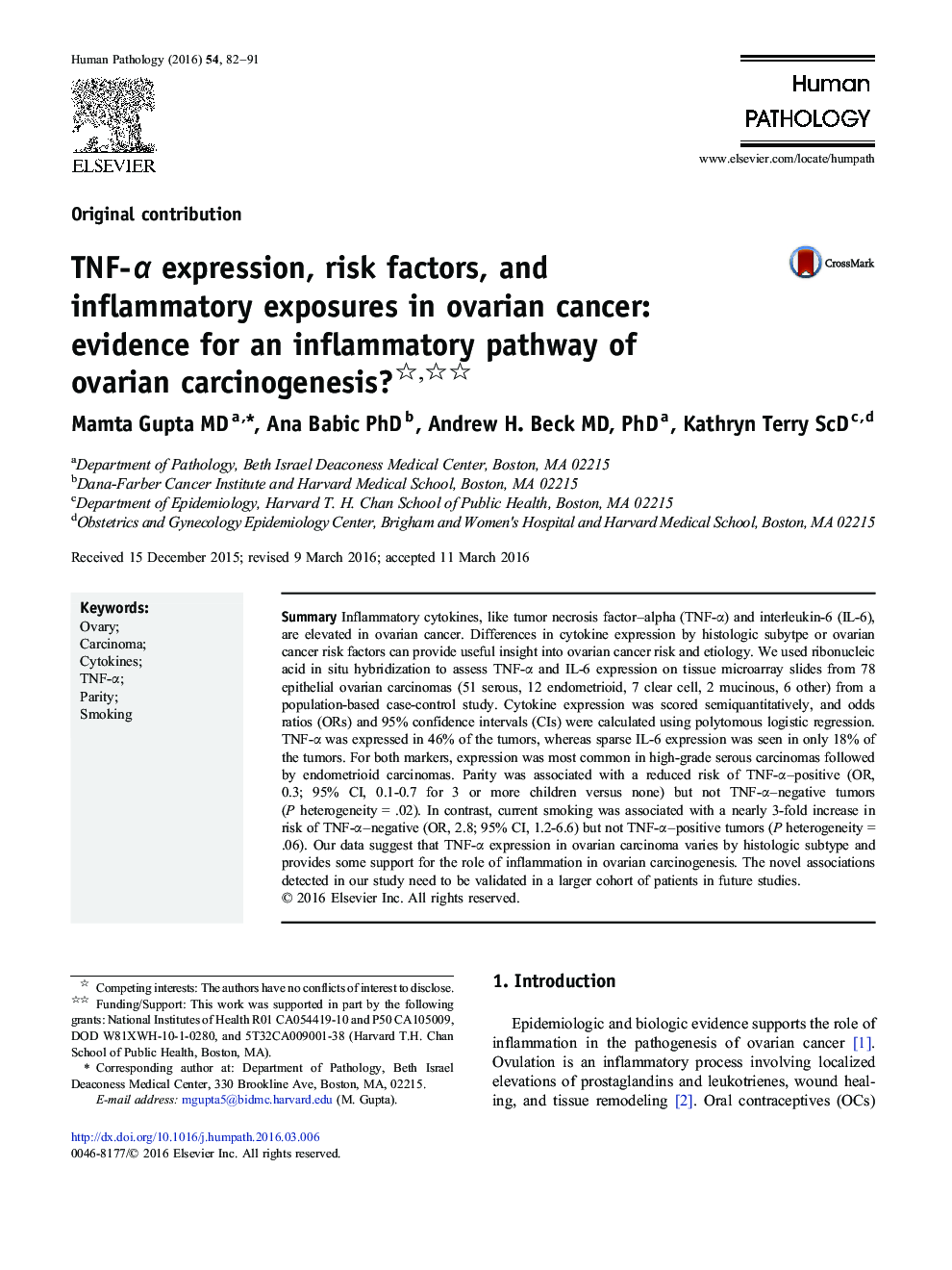| Article ID | Journal | Published Year | Pages | File Type |
|---|---|---|---|---|
| 6215416 | Human Pathology | 2016 | 10 Pages |
SummaryInflammatory cytokines, like tumor necrosis factor-alpha (TNF-α) and interleukin-6 (IL-6), are elevated in ovarian cancer. Differences in cytokine expression by histologic subytpe or ovarian cancer risk factors can provide useful insight into ovarian cancer risk and etiology. We used ribonucleic acid in situ hybridization to assess TNF-α and IL-6 expression on tissue microarray slides from 78 epithelial ovarian carcinomas (51 serous, 12 endometrioid, 7 clear cell, 2 mucinous, 6 other) from a population-based case-control study. Cytokine expression was scored semiquantitatively, and odds ratios (ORs) and 95% confidence intervals (CIs) were calculated using polytomous logistic regression. TNF-α was expressed in 46% of the tumors, whereas sparse IL-6 expression was seen in only 18% of the tumors. For both markers, expression was most common in high-grade serous carcinomas followed by endometrioid carcinomas. Parity was associated with a reduced risk of TNF-α-positive (OR, 0.3; 95% CI, 0.1-0.7 for 3 or more children versus none) but not TNF-α-negative tumors (P heterogeneity = .02). In contrast, current smoking was associated with a nearly 3-fold increase in risk of TNF-α-negative (OR, 2.8; 95% CI, 1.2-6.6) but not TNF-α-positive tumors (P heterogeneity = .06). Our data suggest that TNF-α expression in ovarian carcinoma varies by histologic subtype and provides some support for the role of inflammation in ovarian carcinogenesis. The novel associations detected in our study need to be validated in a larger cohort of patients in future studies.
